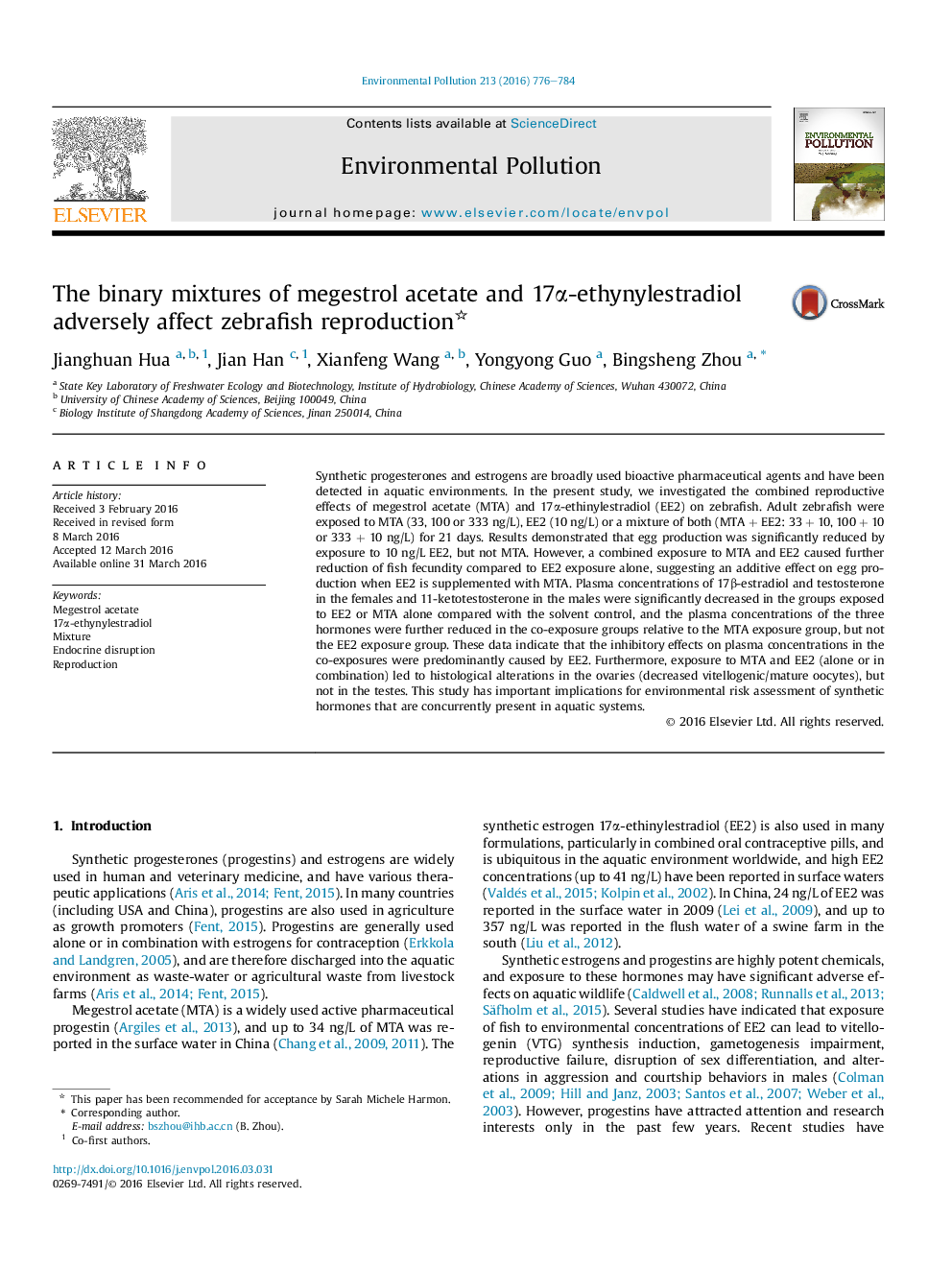| Article ID | Journal | Published Year | Pages | File Type |
|---|---|---|---|---|
| 6315009 | Environmental Pollution | 2016 | 9 Pages |
Abstract
Synthetic progesterones and estrogens are broadly used bioactive pharmaceutical agents and have been detected in aquatic environments. In the present study, we investigated the combined reproductive effects of megestrol acetate (MTA) and 17α-ethinylestradiol (EE2) on zebrafish. Adult zebrafish were exposed to MTA (33, 100 or 333 ng/L), EE2 (10 ng/L) or a mixture of both (MTA + EE2: 33 + 10, 100 + 10 or 333 + 10 ng/L) for 21 days. Results demonstrated that egg production was significantly reduced by exposure to 10 ng/L EE2, but not MTA. However, a combined exposure to MTA and EE2 caused further reduction of fish fecundity compared to EE2 exposure alone, suggesting an additive effect on egg production when EE2 is supplemented with MTA. Plasma concentrations of 17β-estradiol and testosterone in the females and 11-ketotestosterone in the males were significantly decreased in the groups exposed to EE2 or MTA alone compared with the solvent control, and the plasma concentrations of the three hormones were further reduced in the co-exposure groups relative to the MTA exposure group, but not the EE2 exposure group. These data indicate that the inhibitory effects on plasma concentrations in the co-exposures were predominantly caused by EE2. Furthermore, exposure to MTA and EE2 (alone or in combination) led to histological alterations in the ovaries (decreased vitellogenic/mature oocytes), but not in the testes. This study has important implications for environmental risk assessment of synthetic hormones that are concurrently present in aquatic systems.
Related Topics
Life Sciences
Environmental Science
Environmental Chemistry
Authors
Jianghuan Hua, Jian Han, Xianfeng Wang, Yongyong Guo, Bingsheng Zhou,
